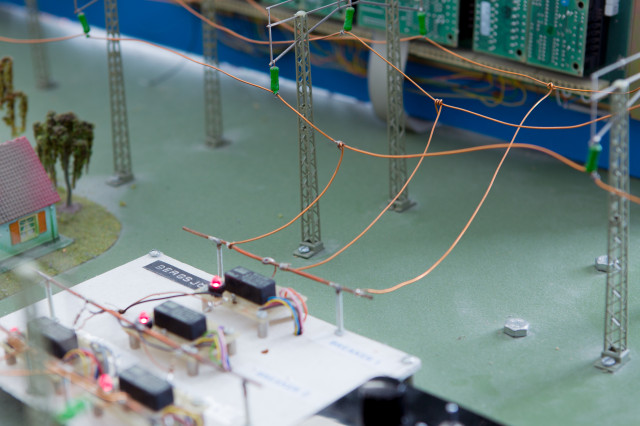- A group of about 2-7 students should solve a project task, whose aim is that before a certain date produce a prototype that satisfies a given specification. It is the students' assignment to plan and carry out the work, i.e., a project plan should be written and be followed. In the project plan, the subprojects that the project consists of are specified, in which order the subprojects should be carried out, when they should be managed, and who or which in the group that should carry out the work.
- There are several possible solutions to the project tasks. The students will therefore during the time of the project encounter many practical problems that require engineering decisions. The participants learn thereby to acquire the necessary theoretical and practical knowledge that is required to solve a project task.
- The course is completed with an oral presentation and a demonstration of the prototype or a presentation of achieved results. During the time of the project, written documentation should be produced. The requirements of the oral and written reporting are similar to the requirements that are set on a degree project.
- Each student will focus on one or several of the tasks of programming (or other implementation work), project management, algorithm development, and gathering of expertise.
- The students should write a "reflective diary" during the work, where they document proof for their learning. Such proofs can e.g. be performance plots with explanations or reports for the use of methods/tools and detailed descriptions of technical problems that have arisen during the work.
EQ2443 Project in Information Engineering 7.5 credits

A group of 2-7 students will carry out a project with the goal to produce a prototype that fulfils a a given specification before a certain deadline. The students are responsible for planning and performing the project, i.e. to divide the projects into subprojects, make a time table, distribute the workload, and decide by whom they should be solved.
Information per course offering
Choose semester and course offering to see current information and more about the course, such as course syllabus, study period, and application information.
Information for Autumn 2026 Start 24 Aug 2026 programme students
- Course location
KTH Campus
- Duration
- 24 Aug 2026 - 11 Jan 2027
- Periods
Autumn 2026: P1 (1 hp), P2 (6.5 hp)
- Pace of study
25%
- Application code
11726
- Form of study
Normal Daytime
- Language of instruction
English
- Course memo
- Course memo is not published
- Number of places
Min: 1
- Target group
- Only students from TINNM
- Planned modular schedule
- [object Object]
- Schedule
- Schedule is not published
Contact
Course syllabus as PDF
Please note: all information from the Course syllabus is available on this page in an accessible format.
Course syllabus EQ2443 (Autumn 2023–)Content and learning outcomes
Course contents
Intended learning outcomes
After passing the course, the student should be able to
- plan a larger project and develop software for a information engineering system within a given time frame and with given specifications
- justify and formulate relevant problem-oriented questions
- estimate and coordinate the workload to meet the stated deadline
- apply theoretical knowledge acquired in earlier courses to solve project-related problems
- implement (for example with Matlab, Python, C, C++) and evaluate the developed algorithms
- explain design choices in an engineering context
- discover problems or challenges and suggest possible solutions
- present and demonstrate the achieved results for different target groups
- write a technical project report that justifies the completed project, discusses and analyzes the relevant challenges, summarises relevant aspects on the implementation and received experimental results, and evaluates and draw conclusions around the achieved results.
Literature and preparations
Specific prerequisites
Knowledge in information engineering, 15 higher education credits, equivalent to the completed courses of two among EQ2300, EQ2401, EQ2341.
Recommended prerequisites
EQ1220 Signal Theory or EQ1270 Stochastic Signals and Systems or equivalent.
Admitted to and a clear ambition to complete at least one of:
EQ2300 Digital Signal Processing
EQ2310 Digital Communications
Literature
Examination and completion
Grading scale
Examination
- PRO1 - Project, 7.5 credits, grading scale: A, B, C, D, E, FX, F
Based on recommendation from KTH’s coordinator for disabilities, the examiner will decide how to adapt an examination for students with documented disability.
The examiner may apply another examination format when re-examining individual students.
If the course is discontinued, students may request to be examined during the following two academic years.
Examiner
Ethical approach
- All members of a group are responsible for the group's work.
- In any assessment, every student shall honestly disclose any help received and sources used.
- In an oral assessment, every student shall be able to present and answer questions about the entire assignment and solution.
Further information
Course room in Canvas
Offered by
Main field of study
Education cycle
Supplementary information
In this course, the EECS code of honor applies, see:
http://www.kth.se/en/eecs/utbildning/hederskodex.